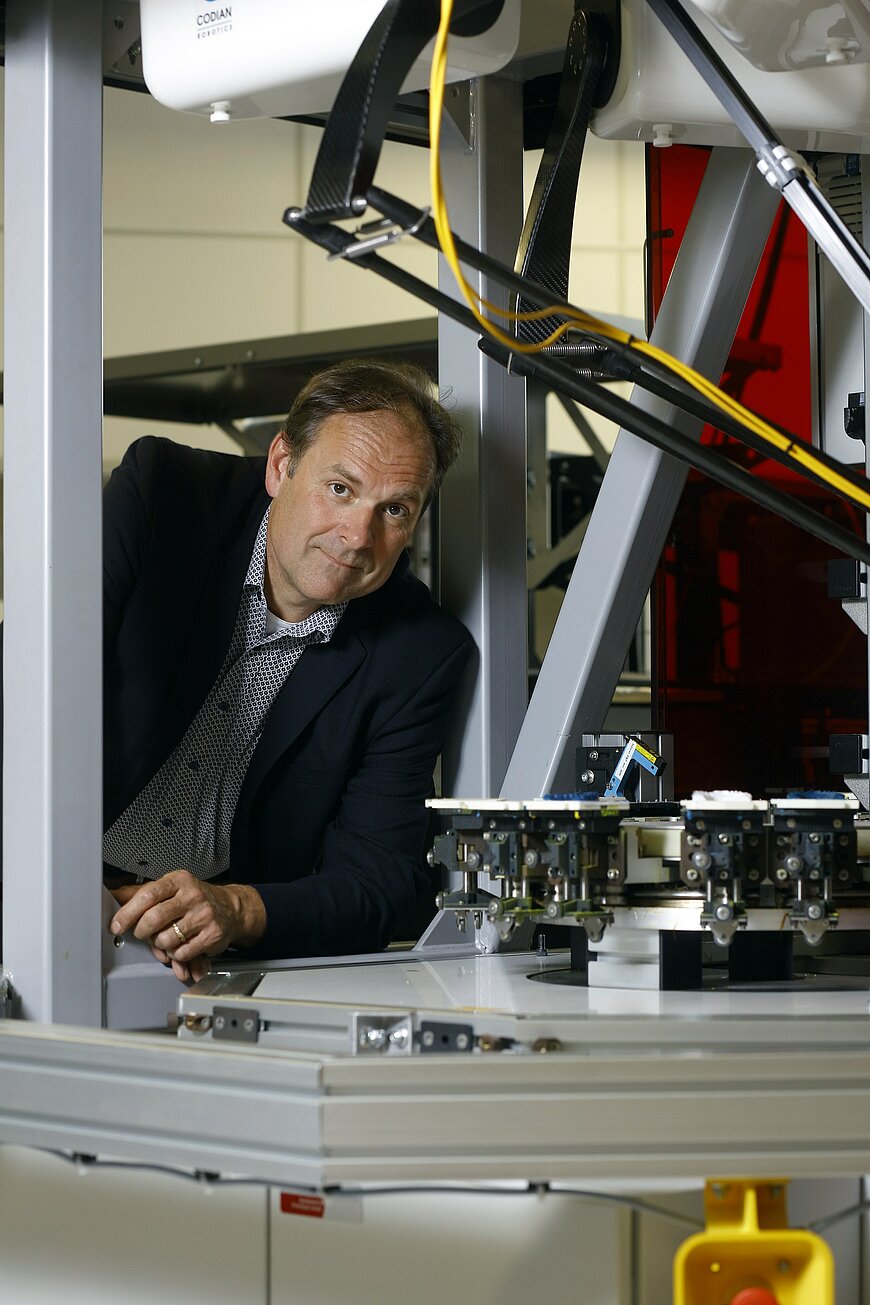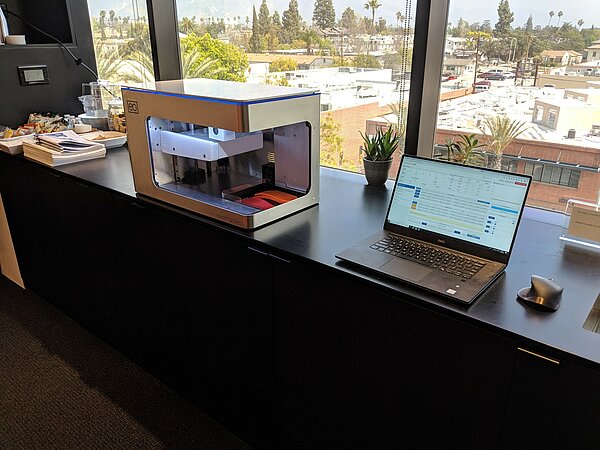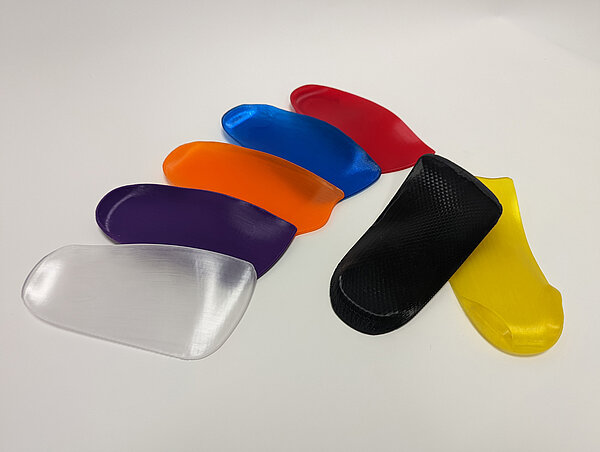3D printers can make reliable products for the orthopedic sector

Just like wood or iron artisans, orthopedics master handcraft. They also shared some of the tools with those modeling stones and wood.The focus of their activity has always been on helping people recover functionalities or correct deformities of the body. Yet, technological progress can mean progress. In moving forward, 3D printers can represent a valuable tool for achieving as much accuracy as possible, without giving up on the customization aspects.
Michelotti Orthopedic Solutions is taking this step. Founded in 1916 in Lucca – Italy – by Ferruccio Michelotti, the shop started creating prostheses for World War I veterans. 106 years later, it’s up to the fifth generation of the family to keep the business going with more than 15 clinics in Italy. To keep it alive, there was no other choice than to leverage innovation.

The Italian orthopedic company is using 3D printers from INDUSTRIO to create orthopedic insoles. The Dutch additive manufacturing company, based in Brainport Eindhoven, developed a mini-factories concept. In a nutshell, the goal is to create a platform that does it all. From designing to the final product, no more than one piece of machinery is involved, with a six meters-long factory – in the case of the largest printers.
Adapting such a technology to be used on the human body is anything but easy. “Over the years we came to know several technologies to be used for orthopedic purposes. However, most of them lacked the adaptability we needed. INDUSTRIO is providing us with a solution enabling a reliable print of bespoke solutions quickly at a high quality,” explains Lorenzo Michelotti, orthopedist, and manager of the family’s business.
Bridging the gap
The so-called CAD-CAM technology is the main digital approach used today. Orthopedists get the patients’ footprints digitally, then shape a block of material with a milling machine. Besides being old, this technology doesn’t guarantee the best accuracy – artifacts might need further hand-refinement with a file. Additionally, most of the material is wasted. As a result, the majority of orthopedists still prefer the manual way. Plus CAD-CAM systems are not that user-friendly either. They eventually craft products by hand from the beginning.
For these reasons, INDUSTRIO aims to bridge the gap between hand-made and digital. “There are many technologies able to acquire footprint. Podologists, podiatrists, and orthopedists see that their patient is not walking correctly and they get that data in a digital form. But often, they end by creating insoles by hand,” explains Marco Cavallaro, INDUSTRIO’s co-founder, and R&D head.
Benefits for the patients
Through INDUSTRIO’s technology, orthopedists get a compact solution that allows them to have control over the process. The company, in collaboration with DESIGNO, developed a user-friendly software that helps customize printing. The process happens in a compact device in just a few minutes. The machine extrudes a thermoplastic material, using the amount of fiber needed only. The compactness of the printer is one of its main pros. Those who can’t invest in all the equipment needed, outsource the production of these medical devices. Hence patients might have to wait for weeks before they can start using the products.
“The fact that it is fast, cheap, user-friendly, and already at the shop level represents the main advantages for us. Most importantly, the product is reliable. Other 3D printing methods we tried in the past didn’t have such qualities in terms of mechanical characteristics of the solutions so printed. Neither such a short production time.”
Lorenzo Michelotti, orthopedist and manager of Michelotti Orthopedic Solutions

Technology means accuracy
Given the great amount of technology related to it, starting with insoles was the most obvious choice for Michelotti Orthopedic Solutions. The entry barrier to overcome was lower, as patients are usually familiar with digital applications in this sector. “Customers are happy about this approach because they understand that using technology means getting better accuracy,” highlights Michelotti.
3D printed orthopedic corsets
Insoles only represent the starting point of such a process. Both partners are already giving a tryout to the printers with other orthopedic devices such as corsets or other body braces.
“The human body is sensible, so for some applications, it is tough to replicate this approach. However, in the case of corsets for scoliosis, we see the potential. It would be favorable for us in terms of optimizing cost production and including new product features,” underlines Michelotti.
In addition to those, INDUSTRIO is tailoring its printers to other application cases in the med-tech sector, such as the dental one. Besides medical applications, the Dutch company offers a wide range of solutions, printing with powder and liquid as well.
“What we envision is using additive manufacturing to achieve a total manufacturing solution. We don’t want to be labeled as a printing company but as one that applies a lot of printing technologies to deliver effective production tools,” states Marc Evers, INDUSTRIO’s co-founder.
Willingness to innovate
Handcraft is still valuable in the orthopedic sector. Some professionals are more reluctant to use smarter tools instead of files and rasps, but innovation can represent a growth opportunity as well as a necessity.
“Michelotti Orthopedic Solutions has always been keen to embrace innovation,” says Leonardo Di Sacco, Ortopedica Michelotti’s operational director for the digital transition. “Integrating innovation in companies is a growing opportunity. By incorporating such technologies, the ownership is bringing the company into the future. Combining innovation with the human body is the challenge we take on every day.”
To this extent, more doctors and orthopedists are willing to discover more about innovative procedures and applications that could make their life easier. Michelotti: “Last week I attended a med-tech meeting and I spoke about how to use technology in orthopedics. Doctors mostly perceive technology as a tool to help them rather than a burden. The desire to exploit innovation is there since they know it can make a difference.”
Choosing the right partners
As the two companies sketched a roadmap to apply the solution to other use cases, INDUSTRIO keeps doing research with its industrial partners.
“The printer could have a very large impact in the orthopedic sector, but it may also be something that shoe retailers could use too – since the printer is not as bulky. Furthermore, we are trying to find a way to effectively print insoles using recycled plastic. That’s quite challenging because it’s key to have still a high-performing material,” underlines Cavallaro.
In INDUSTRIO’s view – to keep growing – it will be pivotal to keep establishing a solid network of partners. “We have an interesting Lego box, with different printing technologies and manufacturing knowledge. We got it all but we know that the devil is in the detail,” Evers concludes.